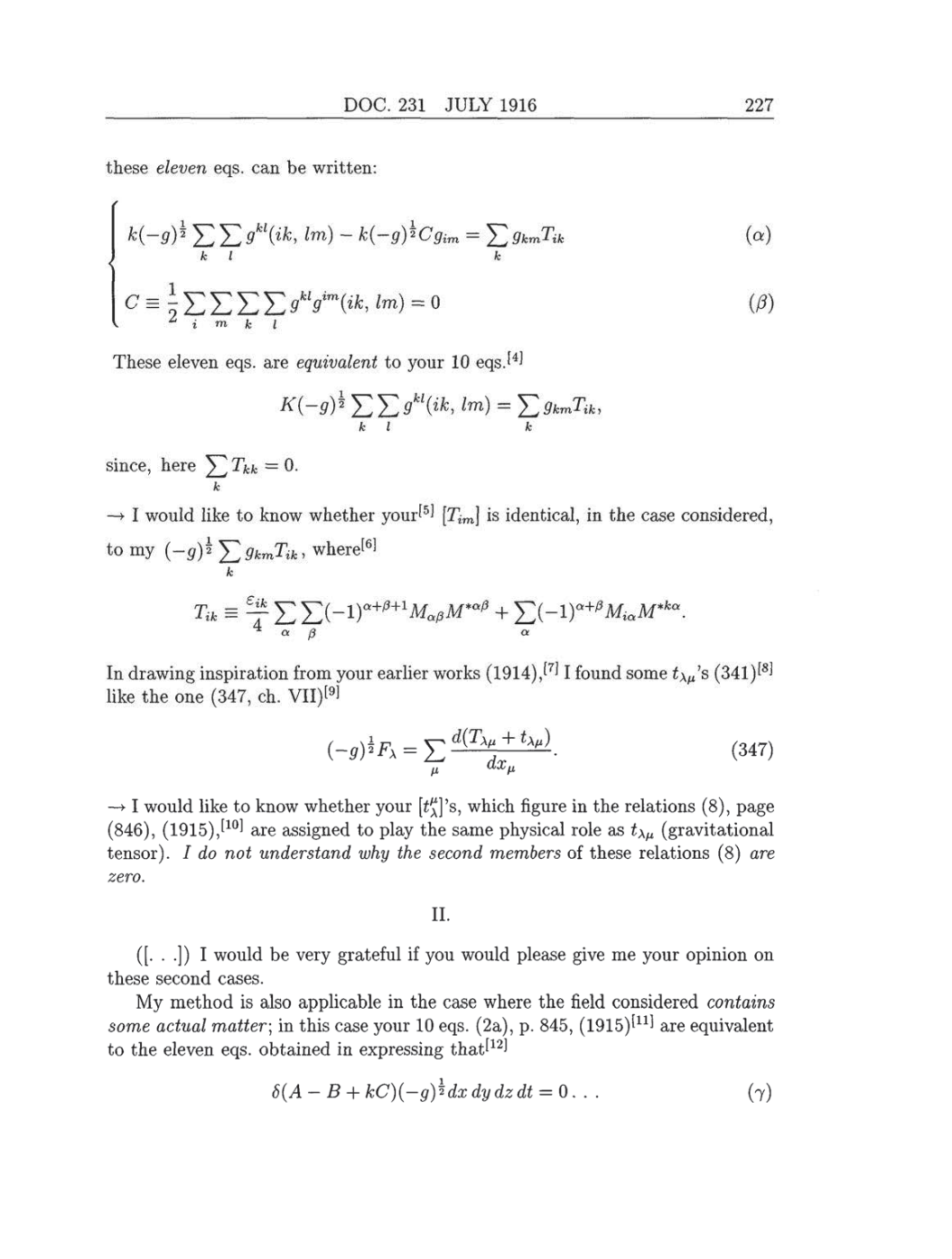DOC.
231
JULY
1916 227
these eleven
eqs. can
be written:
K~g)
*
Y
Y
lm)
-
k(-g)
2
Cgim
=
Y
9km^ik
(a)
k
1
k
c
=
lT,T,ET,aus'm^lm)
=
0
(ß)
-
¿
i
m
k
l
These eleven
eqs. are
equivalent
to
your
10
eqs.[4]
K(-9)*YY9k\ik,
lm)
=
Y9kmTik,
k
l
k
since,
here
ETkk
=
o.
-
I
would
like to
know whether
your[5]
[Tim]
is
identical,
in
the
case
considered,
to
my
(-g)1/2
EgkmTik,
where[6]
Tik^-fY
Y(-lY+ß+lM*ßM*aß
+
£(-i
Y+ßMiaM*ka.
In
drawing
inspiration
from
your
earlier
works
(1914),[7]
I found
some
tAu's
(341)[8]
like
the
one (347,
ch.
VII)[9]
(-9)jF
=
Ed(TY+‘A,,)-
(347)
/i
-
I
would
like to
know whether
your
[tuA]’s,
which
figure
in
the
relations
(8), page
(846),
(1915),[10] are
assigned
to
play
the
same physical
role
as
tAu
(gravitational
tensor).
I
do
not
understand
why
the
second members
of
these relations
(8) are
zero.
II.
([...])
I
would be
very grateful
if
you
would
please
give me
your opinion
on
these second
cases.
My
method
is also
applicable
in
the
case
where the
field
considered contains
some
actual
matter;
in
this
case
your 10
eqs. (2a), p. 845,
(1915)[11]
are
equivalent
to
the
eleven
eqs.
obtained
in
expressing
that[12]
d(A
-
B
+
kC)(-g)1/2dxdydzdt
=
0...
(r)
